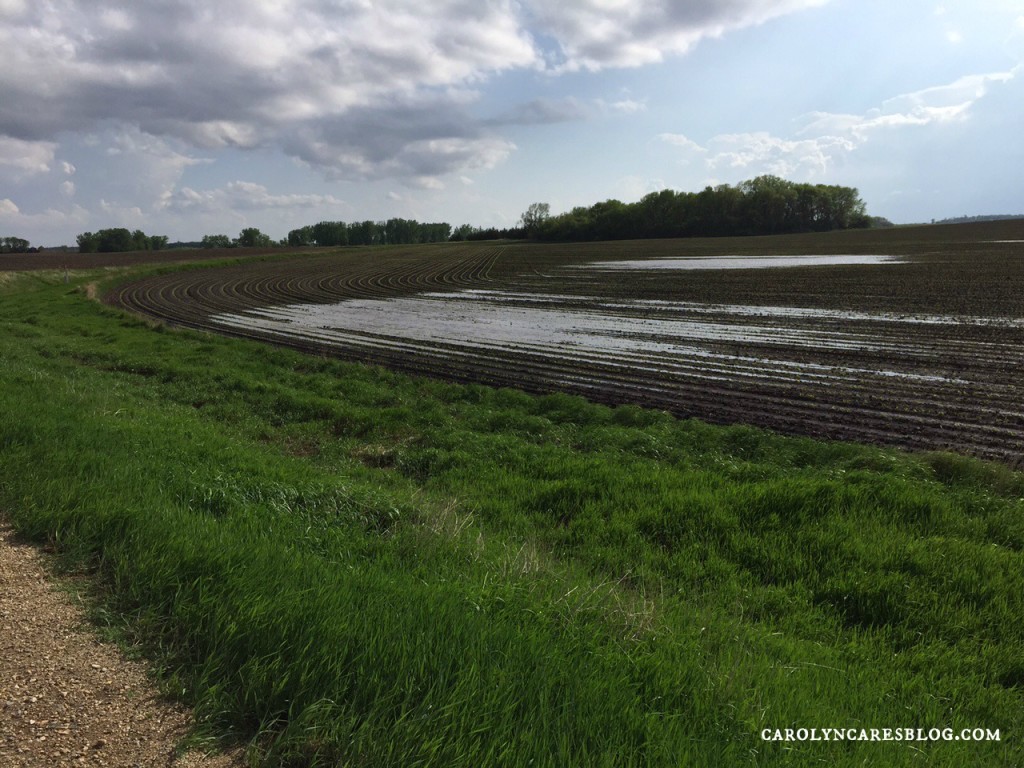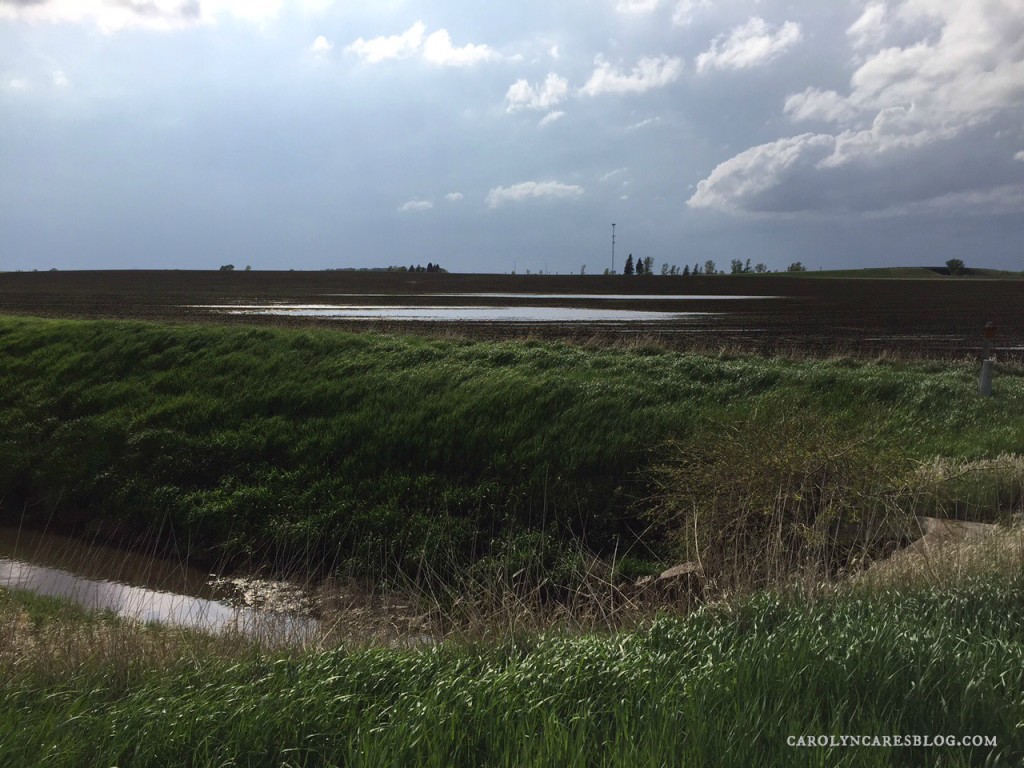Jonathan and I were attending graduation open houses on a rainy day this weekend, and noticed how the water was standing in fields near drainage ditches following a pretty intense downpour. There was one field in particular, where the buffer strip is about 5 feet wide at its peak. This narrow buffer is good to prevent accidental applications of fertilizers or pesticides onto the banks of the drainage ditch, but it would never be crucial in filtering surface drainage. Why? The land runs up hill to the ditch bank. The standing water shows where the low spots are.
This photo was taken along the county road, so the ditch in the foreground is road ditch. When you follow the curve of the crops, you will see on the left hand side the strip of grass. That is the edge of the narrow buffer. Look how far back the water is standing.
Here is another view of the same ditch, and the same field, taken from a little farther down the road.
The ditch bank is fully intact, and doesn’t have water flowing from the field over the crown and into the ditch. This is a good example of how site specific buffer strips make sense. I would have to agree, too, with the NRCS buffer strip study that stressed the importance of site specific buffer strips, and not having that be the stand alone way to achieve the water quality results we are looking for. As more farmers are going back to no-till or minimum till methods, implementing cover crops, and using variable rate technology, our water quality will continue to improve.
Farmers are not opposed to installing buffer strips. Farmers are not opposed to clean water. Farmers are opposed to a one-size-fits-all-one-method-will-fix-all way of thinking. We cannot forget the importance of site specific buffer strips, nor the importance of a little common sense.

